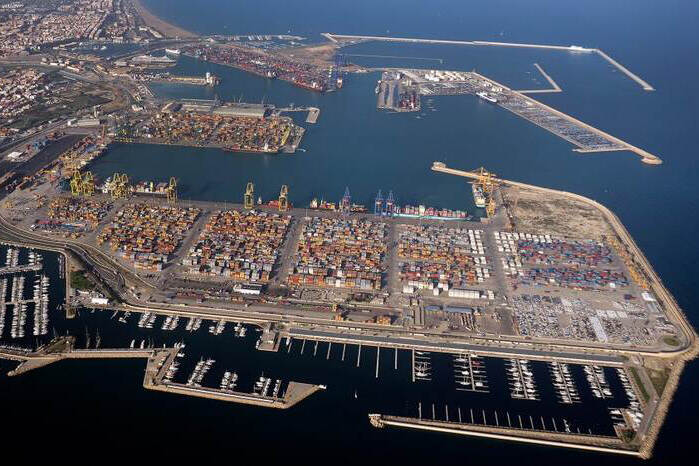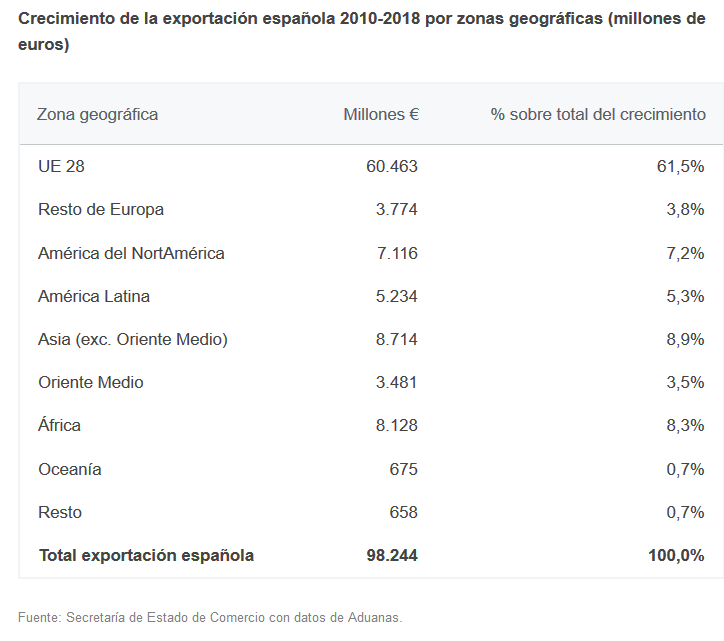Spain: Is geographic diversification the way to increase exports?
This is the title of an analysis, based on the export boom of Spanish goods and their destination markets, with striking conclusions for companies and public administration’s policies.

Written by Enrique Fanjul, former counselor for Economy and Trade at the Spanish Embassy in The Hague, who, based on statistics published from 2010 to 2018, reaches two conclusions to be taken into account in internationalization policies.
An objective of the internationalization policies of many countries, including Spain, is to increase the geographical diversification of foreign export markets. In particular, in the case of Spain, it has been pointed out many times that there is an excessive concentration in the EU.
The geographical diversification’s goal is justified for two reasons. One is to diversify risks: a high concentration on a small number of markets can have negative effects in the event of an economic contraction.
Another, perhaps more important, reason is that diversification, especially into emerging markets, is seen as favoring higher export growth because these markets have higher growth rates.
“Considering that this is complex topic”, Fanjul acknowledges, his aims is “to comment on some significant data offered by Spanish export’s evolution in recent years”, which, at the very least, raise some questions about the result of the intended diversification.
This decade has been a period of strong expansion of Spanish exports (although since 2018 there has been a significant slowdown). Between 2010 and 2018, total exports have grown by nearly € 100 billion. Figure 1 shows how this growth in Spanish exports is distributed among the different geographical areas.

Europe and North America (excluding Mexico, which is part of Latin America in official statistics) have been responsible for 72.6% of the increase in Spanish exports. Therefore, the bulk of the increase in exports has been due to sales of goods to developed markets.
A first conclusion drawn by Fanjul is that the so-called “Spanish export miracle” of recent years has been based above all on exports to developed countries and, to a relative small extent, on exports to emerging markets.
Figure 2 shows how the EU weight has changed in two periods: 2002-2010 and 2010-2018. At the same time, it also shows how total Spanish exports have changed during these two periods, in order to see the relationship between the variation in geographical diversification and the exports’ growth.

In the light of these data, the degree of geographical concentration of exports to the EU has fallen more sharply in the period when export growth has been lowest. That is to say, and this is the second Fanjul’s conclusion, exports have grown more strongly when the progression in geographical diversification has been lower.
The economist ends his article by stating that these are data of unquestionable relevance, with implications for the actions of companies as well as for public administrations.
Source: realinstitutoelcano.org